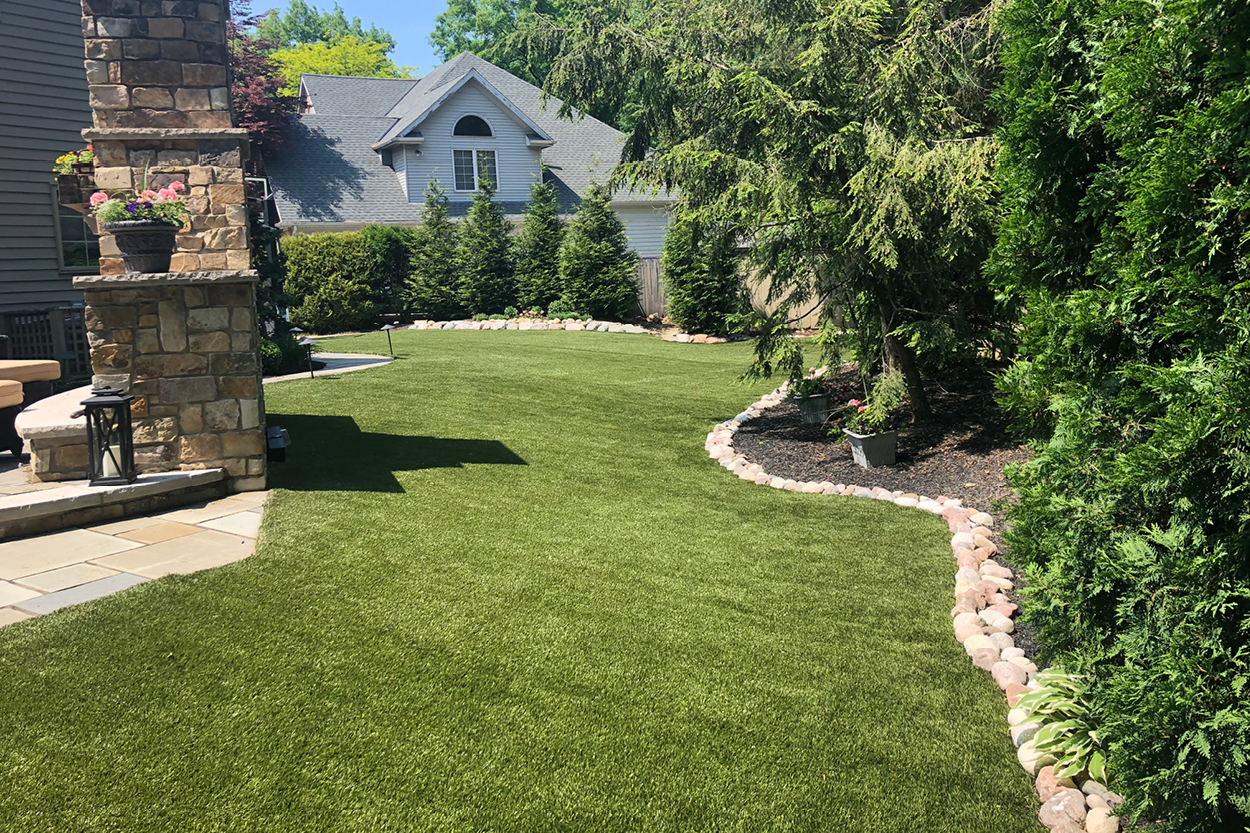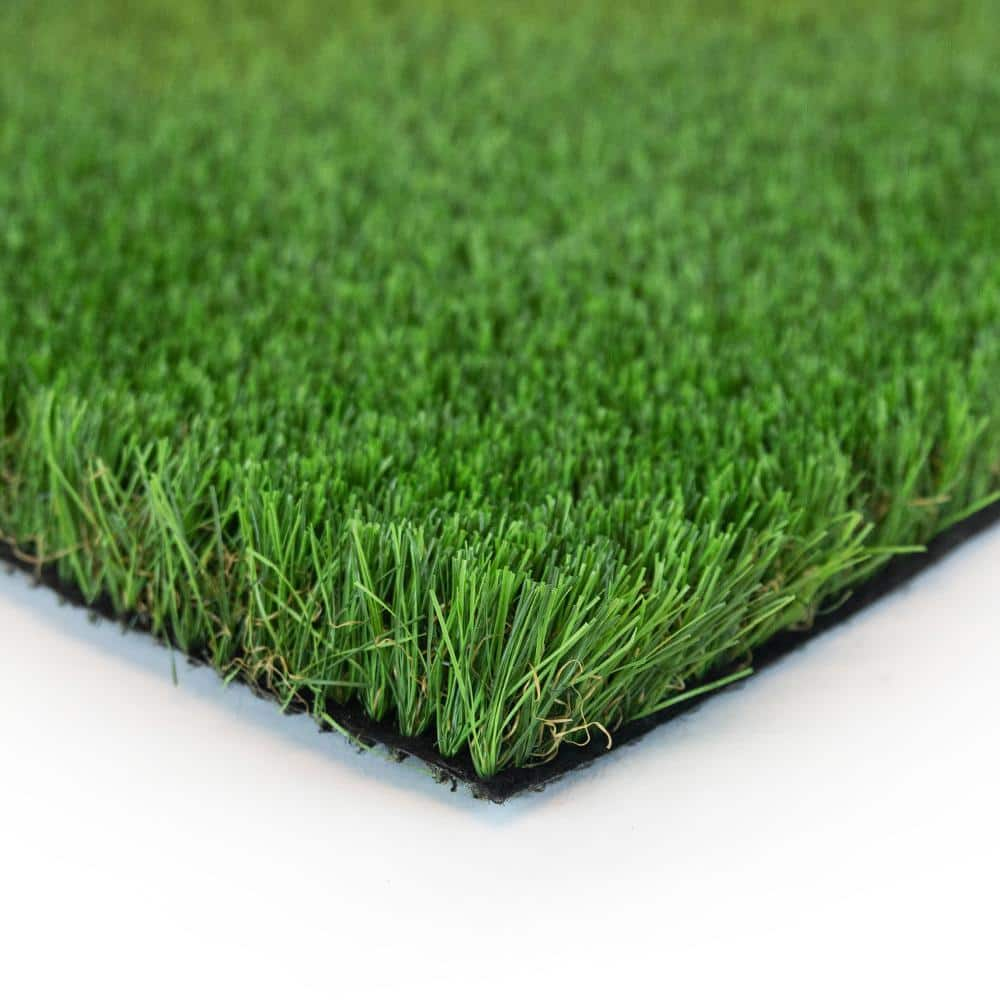Luxury Arizona Turf Installation Services for Residences and Businesses
Luxury Arizona Turf Installation Services for Residences and Businesses
Blog Article
See Why Homeowners Prefer Artificial Grass for Sustainable Landscape Design Practices
As homeowners significantly focus on sustainability in landscape design, synthetic grass has become an engaging choice to conventional turf. Its ability to preserve water, reduce upkeep initiatives, and lessen ecological impact settings it as a useful selection for those seeking environmentally friendly options. Additionally, the aesthetic allure and versatility of man-made lawn satisfy varied layout choices. The effects of this change expand past mere convenience and visual appeals, motivating a better exam of how these choices influence wider ecological end results. What continues to be to be discovered is the complete extent of benefits that synthetic grass can use to property owners and the atmosphere alike.
Water Preservation Perks
One of the most substantial advantages of fabricated lawn is its role in water preservation. In comparison, artificial lawn eliminates this demand totally, as it does not need watering.
In addition, the installment of synthetic lawn can contribute to a more sustainable landscape. Home owners can considerably reduce their water costs, enabling for reallocation of sources to other ecological initiatives or home uses. Additionally, synthetic turf is designed to hold up against different weather problems without the demand for supplementary watering, making it an excellent choice for regions facing water shortage.
The ecological advantages prolong beyond prompt water savings. By reducing water consumption, synthetic grass assists to reduce the influences of climate modification, preserving vital communities that are endangered by extreme water removal. As sustainable landscaping methods get traction, artificial lawn becomes a responsible choice for house owners seeking to produce environmentally friendly outside spaces.
Decreased Upkeep Efforts
Fabricated lawn considerably reduces maintenance efforts contrasted to standard turf lawns. With fabricated lawn, home owners can eliminate the lengthy tasks related to natural landscaping, such as mowing, feeding, and weeding. This not just saves valuable time yet also minimizes physical labor, making grass care easily accessible for individuals of all ages.
Standard grass call for regular cutting to preserve a cosmetically pleasing height, whereas artificial lawn remains regularly lavish without the demand for reducing. In addition, home owners no longer need to use fertilizers or pesticides, which are commonly needed to keep all-natural grass healthy.
Moreover, synthetic grass is resilient and long lasting, requiring minimal maintenance past occasional brushing and rinsing to remove particles. This ease of upkeep allows house owners to enjoy their exterior spaces without the consistent worry of maintenance, providing even more time for leisure and family members activities. Ultimately, the minimized maintenance efforts related to synthetic lawn make it an attractive alternative for those seeking a low-maintenance, aesthetically appealing landscape.

Ecological Effect Decrease
There is a growing recognition of the ecological benefits related to synthetic grass, specifically in regards to water preservation and reduced chemical use. Conventional grass require significant amounts of water, specifically in drought-prone areas, causing increased stress on local water sources. On the other hand, synthetic grass gets rid of the demand for watering, dramatically lowering water intake and advertising sustainability.
Furthermore, standard grass maintenance frequently entails the application of plant foods, pesticides, and herbicides, which can add to soil and water pollution. Synthetic grass mitigates this ecological danger by needing very little maintenance and virtually getting rid of the demand for harmful chemicals. This not just improves dirt wellness but additionally safeguards local ecosystems from toxic runoff.
Furthermore, the manufacturing of all-natural turf lawns commonly entails making use of nonrenewable fuel sources for mowing and landscape design devices, additional adding to greenhouse gas exhausts. By picking man-made lawn, property owners can significantly reduce their carbon impact connected with grass care activities.
Visual Appeal and Convenience
In enhancement to its environmental benefits, synthetic grass offers significant aesthetic allure and flexibility for landscaping. House owners can achieve a lush, green look year-round, eliminating the seasonal fluctuations frequently related to all-natural yard. This consistent aesthetic not just enhances the aesthetic appeal of a home however likewise adds to a well-kept and refined look.
Additionally, synthetic grass is readily available in a variety of colors, structures, and designs, permitting personalization to fit private choices and style themes - Arizona turf. Whether used in household gardens, industrial spaces, or leisure areas, it can perfectly integrate right into varied landscape design styles, from contemporary minimal to lush exotic settings
The adaptability of synthetic grass extends beyond plain look; it can be mounted in different locations, consisting of roofs, outdoor patios, and also indoor areas, creating possibilities for one-of-a-kind landscape design services. Furthermore, it is ideal for a series of tasks, from children's play areas to pet-friendly atmospheres, supplying functionality without compromising design.
Inevitably, the aesthetic allure and adaptability of fabricated turf make right here it an attractive option for house owners seeking sustainable landscape design remedies that do not sacrifice charm for environmental responsibility.

Long-Term Cost Financial Savings
One of the most compelling benefits of synthetic grass is its possibility for lasting price financial savings. Unlike natural yard, which needs regular upkeep-- consisting of mowing, watering, feeding, and parasite control-- synthetic grass substantially decreases these continuous expenses. Property owners can save a significant amount on water expenses, especially in regions where water scarcity is a pressing issue. The elimination of lawn treatment services even more contributes to financial savings, as there is no demand for specialized tools or labor.
Furthermore, artificial grass has a life expectancy of 15 to 25 years, depending on its top quality and usage. This resilience decreases substitute expenses, making it a much more cost-effective selection in the future. Furthermore, the first financial investment in man-made lawn can typically be redeemed through the financial savings accumulated read over time.
While the upfront cost may appear higher compared to turf setup, the collective cost savings from decreased upkeep and water use typically exceed these first expenses. Inevitably, the fostering of artificial turf not just promotes a lasting landscaping solution but also provides homeowners a financially savvy option that straightens with long-term budgeting goals.
Final Thought
Man-made grass becomes an engaging alternative for sustainable landscape design, offering significant benefits in water preservation, lowered maintenance efforts, and decreased environmental influence. Its aesthetic charm and versatility improve the visual landscape while aligning with modern sustainability goals. Long-lasting expense savings add to its good looks for house owners. As areas increasingly focus on ecologically pleasant techniques, the adoption of fabricated turf stands for a progressive step toward achieving resistant and lasting landscapes.
Furthermore, artificial lawn is developed to withstand various climatic conditions without the demand for extra watering, making it a perfect choice for regions encountering water shortage. (Turf installation phoenix az)

Man-made lawn arises as an engaging alternative for lasting landscape design, supplying significant advantages in water preservation, reduced upkeep efforts, and decreased ecological influence.
Report this page